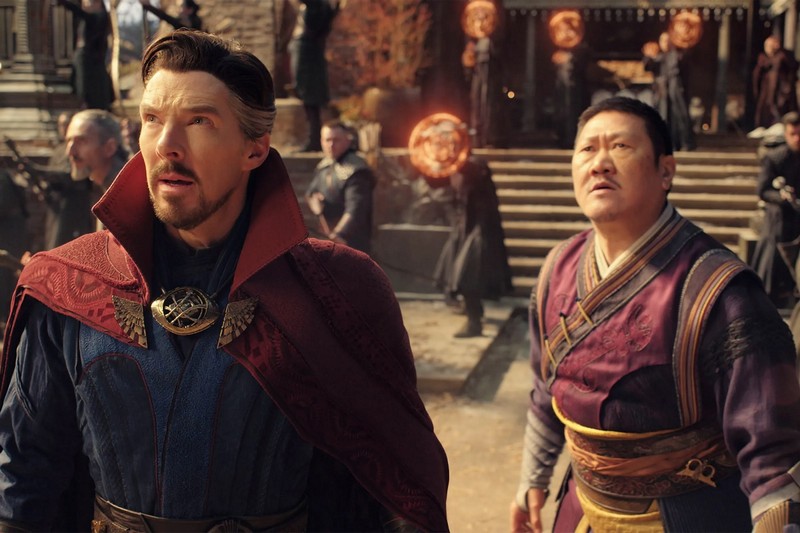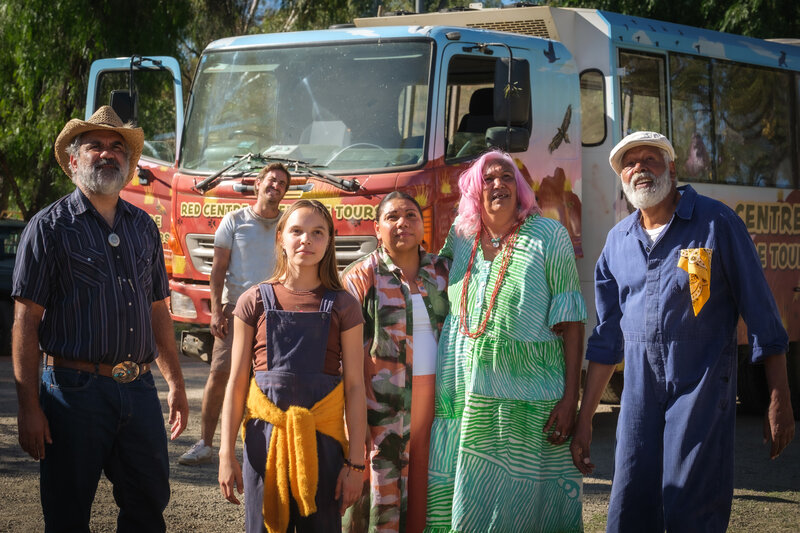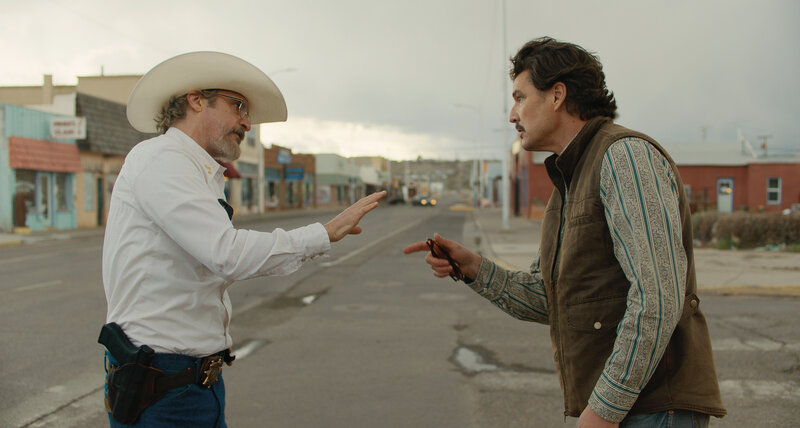Those with long memories might recall the consternation back in the early 2000s when storied horror director Sam Raimi – of Evil Dead fame – was tapped to direct Marvel’s Spider-Man (2002). Of course, it all turned out fine. After three Spider-Man movies, Raimi returned in a more limited way to his horror roots. Now he’s back in the Marvel fold with Dr Strange in the Multiverse of Madness, a film that’s both pure Marvel, and yet unlike virtually everything else they’ve done.
Any discussion about this film has to come with a heavy caveat. Dr Strange in the Multiverse of Madness is deeply embedded in the Marvel Cinematic Universe (MCU). If you’re unfamiliar with a lot of other MCU stories, you may struggle to keep up with it. At a minimum, you should be aware of Avengers: Infinity War and Endgame, the TV series WandaVision, the first Dr Strange movie and the recent Spider-Man: No Way Home. I’ve seen all those, and still had trouble in a few spots.

The film opens with a dream sequence in which Dr Strange (Benedict Cumberbatch) finds himself in nightmare world trying to save a young girl. But it wasn’t a dream at all; Strange had slipped into another universe. The arrival of the girl from the “dream”, America Chavez (Xochitl Gomez) – not to mention a monster from another dimension – confirms it’s all too real. Trying to find out why these worlds are colliding, Strange reaches out to Wanda (Elizabeth Olsen). But after meeting with her, it soon becomes apparent Wanda is actually the cause of the chaos.
In our world, Wanda’s children (see the WandaVision series) are figments of her imagination. But she’s convinced that in another universe, they’re real and they love her. But to get to that other realm, she needs the power to move between worlds in the multiverse. And only America has that power. Wanda will use any means to get America’s power, including using a powerful book of evil magic called the Darkhold.
Dr Strange in the Multiverse of Madness is Marvel spectacle on a grand scale, with elements of Raimi’s trademark horror thrown in. A scene in which a bunch of demons is wrangled into a cloak is pure Raimi. The combination felt a bit “off” to me, but maybe my expectations from the original Dr Strange were just being reset. Raimi does a fine job of crafting his own vision of the multiverse, and although it’s not nearly as out-there as the fabulous Everything, Everywhere, All At Once, it’s mostly compelling. My main qualm is about the ending, which descends into some very silly territory.
The plot from screenwriter Michael Waldron (Loki) is simplicity itself, despite the director’s flourishes. It’s a basic poppet-in-peril story with Marvel window-dressing. But Waldron cleverly weaves in several references to disparate – and in some cases, long forgotten – MCU movies. The special effects are impressive – at least until they basically take over in the final act.
Benedict Cumberbatch (The Power of the Dog) exudes confidence and easy charm as Strange, though it’s not exactly an acting stretch for him. Elizabeth Olsen actually gets the juicier role as the somewhat unhinged Wanda, a part requiring considerably more range. Xochitl Gomez is poorly served by the script as America – a loaded character name if ever there was one. She basically spends the movie running and looking scared. Benedict Wong (Nine Days) reprises his role as Wong to good effect. Rachel McAdams (Game Night) and Chiwetel Ejiofor (The Old Guard) are also back, but both appear in limited roles.
For die-hard Marvel fans, Dr Strange in the Multiverse of Madness will certainly be a must-see. If you’re not a devotee, you might struggle to keep up with the story, which assumes a lot of its audience. But it’s a rollicking ride either way.
David Edwards
Other reviews you might enjoy:

David Edwards is the former editor of The Blurb and a contributor on film and television





